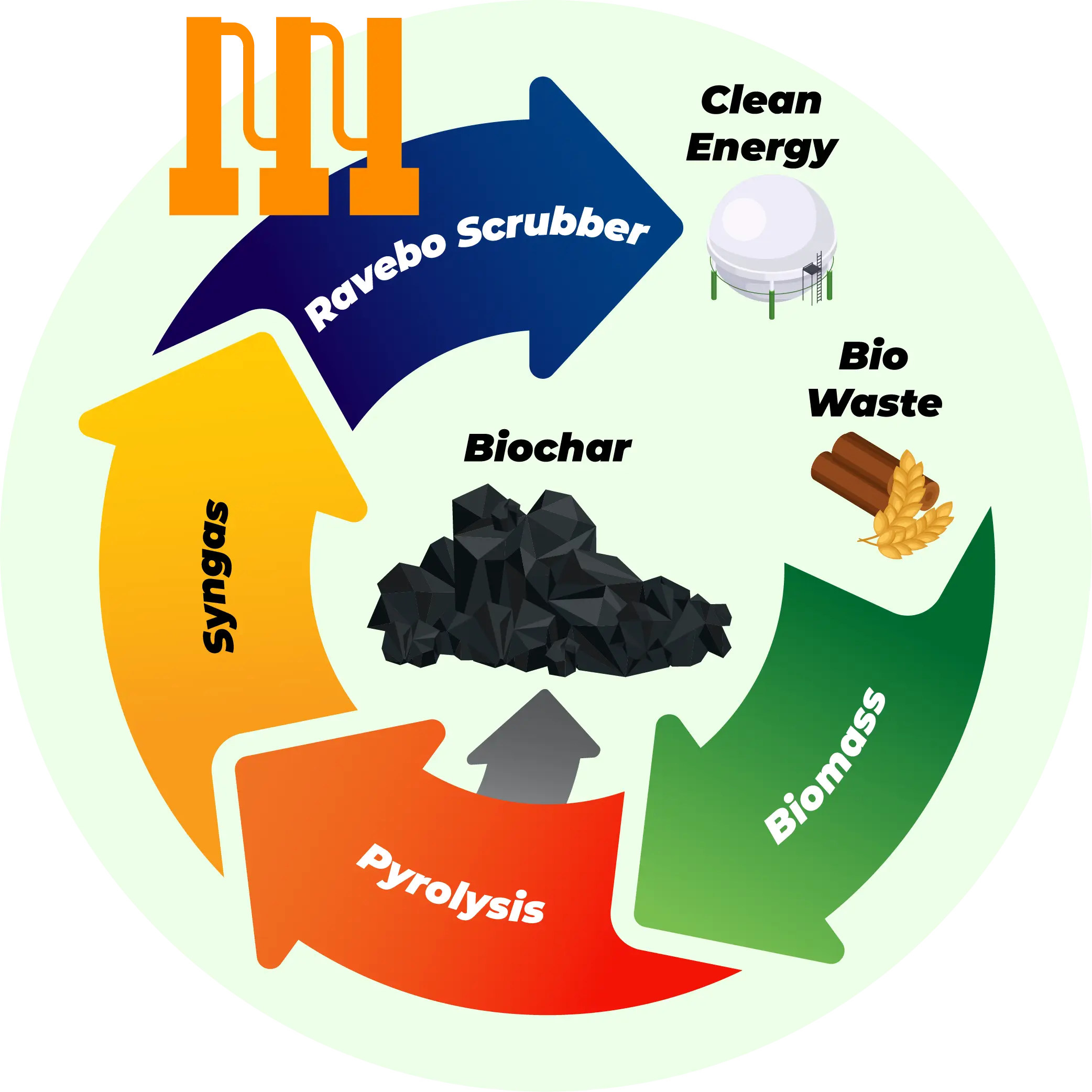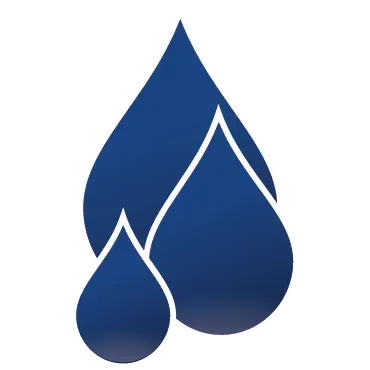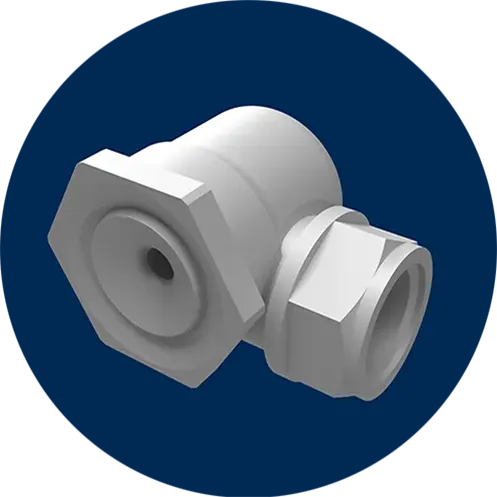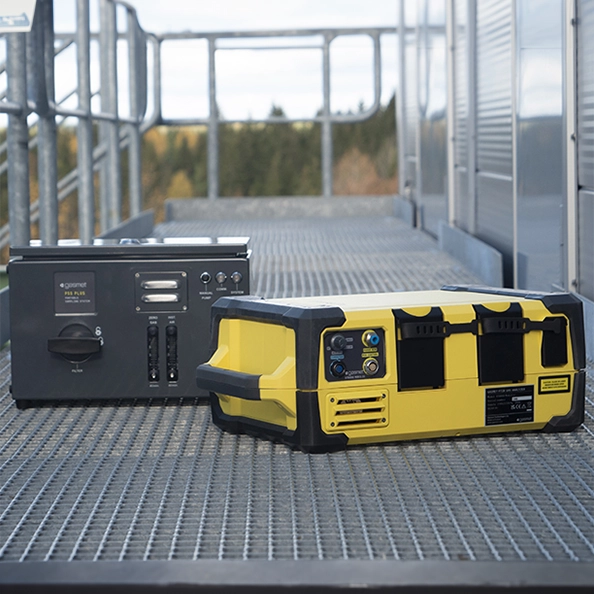
Syngas at its Cleanest, Efficiency at its Finest!
Changing the Future with Clean Syngas!
What is syngas?
Syngas, or synthetic gas, is a fuel gas mixture primarily consisting of hydrogen, carbon monoxide, and some carbon dioxide. It is a versatile intermediate for the production of electricity, fuels, and chemicals. Its composition can vary based on the feedstock and the gasification process, making it adaptable for various energy solutions. Syngas is produced from the gasification of a carbon-containing fuel to a gaseous product with a heating value.

Gasification

Gasification is a well-known technology and new applications are fueled as a replacement for fossil fuels with renewable energy sources to reduce CO2 emissions. Syngas generated by gasification contains impurities which will impede direct use. Impurities can cause severe problems to operating facilities. Corrosion, fouling, clogging of instrumentation, damage and tarring of machinery are serious problems that can lead to accidents and downtime.
Optimizing Syngas Purification with Wet Gas Scrubbing
Main pollutions in the syngas that can be eliminated with a scrubber can be classified as:
- Fine dust (solid particulate matter)
- Alkali compounds
- Nitrogen compounds
- Tar
- Light hydrocarbons (methane, ethane)<.li>
- Heavy hydrocarbons
Depending on the kind of biomass used other components could originate or being released.
There are several methods to improve the syngas to comply the necessary requirements. Ravebo uses a technique called wet gas scrubbing. Wet gas scubber technology decreases the amount of impurities in the syngas. Water and an organic liquid (solvent) predominantly have to be applied for tar and PAHs elimination from syngas. Nowadays rapeseed methyl ester and biodiesel appear to be more environmentally friendly, are the most common organic liquids, sometimes used in combination with alcohols.The objective of Ravebo is to investigate tar elimination, which is a mixture of heavier hydrocarbons and compounds. Once it has gone through this process the syngas can for instances be used in combustion engines or methanization systems. The syngas is contaminated and has a high discharge temperature (< 800°C).

Syngas Purification Solutions Podcast
The Role of Wet Gas Scrubbers in Syngas Treatment

In this podcast episode, we explore the critical role of syngas purification in industrial operations, focusing on advanced scrubbing technology to clean and optimize synthetic gas. Syngas, a versatile fuel made from carbon-based materials, often contains impurities like tar and dust that can hinder its use in energy applications. Ravebo's wet gas scrubbers provide an efficient solution, using a biodiesel-based solvent to purify syngas, making it safer for applications like combustion engines and methanization systems. Tune in to learn about these innovative solutions for cleaner, more efficient syngas processes.
Listen now!
Get in touch with our scrubber specialist
Boost your syngas processes with our advanced wet gas scrubbers. Our specialist is ready to guide you towards efficiency, productivity, and environmental compliance. Connect with us now for expert advice, custom solutions, and quick responses. Let's find your perfect scrubber solution today.
Contact us
Principle gas scrubbers
A gas scrubber operates by spraying a scrubbing liquid directly into an open chamber with a contaminated gas stream, allowing for efficient pollutant removal through absorption or chemical reaction. This open spray system facilitates direct contact between the gas and liquid, effectively capturing particulate and gaseous pollutants. The open spray system is enhanced by a closed loop pump which recirculates the liquid, conserving resources and minimizing waste. It's crucial for environmental compliance and air quality, significantly reducing emissions across industries.
The optimal droplet size and distribution
 Open spray systems operate based on the difference in velocity potential between liquid droplets and the incoming gas. The liquid is pumped with moderate pressure through nozzles with the objective to get a homogeneous droplet distribution and equal spray pattern. The droplet size is especially important since ultrafine droplets have a particularly large surface to volume ratio. In vertical countercurrent absorbers the droplets fall under the influence of gravity through the upwards rising gas stream and make intense contact with the contaminant particles in the gas. The exceptionally fine droplets create all together a fine mist which results in an efficient capture of particles. The spray absorbers operate relatively simply and are very maintenance-friendly with fairly low energy costs.
Open spray systems operate based on the difference in velocity potential between liquid droplets and the incoming gas. The liquid is pumped with moderate pressure through nozzles with the objective to get a homogeneous droplet distribution and equal spray pattern. The droplet size is especially important since ultrafine droplets have a particularly large surface to volume ratio. In vertical countercurrent absorbers the droplets fall under the influence of gravity through the upwards rising gas stream and make intense contact with the contaminant particles in the gas. The exceptionally fine droplets create all together a fine mist which results in an efficient capture of particles. The spray absorbers operate relatively simply and are very maintenance-friendly with fairly low energy costs.
Closed loop pump system
 Due to the lack of random packing or a structural packing, open spray absorbers have an exceedingly small pressure loss and are virtually insensitive to contamination, which normally cause a larger pressure difference. The scrubber works according to a closed-loop pump system in which the washing liquid is pumped from the buffer. Based on measurement values fresh water can then be added automatically and then drained on basis of other measured principles./p>
Due to the lack of random packing or a structural packing, open spray absorbers have an exceedingly small pressure loss and are virtually insensitive to contamination, which normally cause a larger pressure difference. The scrubber works according to a closed-loop pump system in which the washing liquid is pumped from the buffer. Based on measurement values fresh water can then be added automatically and then drained on basis of other measured principles./p>
Positioning of the spray nozzles
 The positioning of the spray nozzles in the gas scrubber is of the utmost importance for optimal gas treatment, by capturing particles because of intensive contact between washing fluid and the syngas. The clogging-free nozzles create ultrafine droplets with a homogeneous spray pattern to capture practically all dust particulate
and absorb gas particles.
The positioning of the spray nozzles in the gas scrubber is of the utmost importance for optimal gas treatment, by capturing particles because of intensive contact between washing fluid and the syngas. The clogging-free nozzles create ultrafine droplets with a homogeneous spray pattern to capture practically all dust particulate
and absorb gas particles.

FTIR Analyzers

To monitor and analyze the composition of the exhaust gases before and after treatment we use a divce called an FTIR Analyzer. An FTIR (Fourier Transform Infrared) Analyzer is an instrument that uses the Fourier Transform Infrared spectroscopy technique for the analysis of gas samples. It works by passing an infrared light through a gas sample, and the absorbed wavelengths are measured to identify and quantify various components of the gas.
How an FTIR works
Molecules that have a sufficiently large dipole moment absorb infrared light. The absorbed energy is converted into a movement between the different atoms in the molecule. The degree of absorption depends on the number of atoms in the molecule and the type of bond between the atoms. Depending on the characteristics of each molecule, there are multiple frequencies in the infrared spectrum where the molecules absorb the energy of infrared light. If multiple components are present in the gas mixture (both known and unknown), Fourier Transform Infrared (FTIR) is an accurate technique to identify and quantify all infrared-absorbing components. The software of our Gasmet FTIR analyzers is capable of analyzing up to 50 components in real time. This is in contrast to NDIR which looks at one wavelength.
Light
An FTIR spectrophotometer works according to the following principles: light with frequencies from almost the entire IR spectrum is simultaneously sent onto a semi-transparent mirror. Half of the light is not reflected and travels straight ahead, and the other half is reflected at a 90-degree angle. The light is then reflected on the first mirror or on the movable second mirror. The position of this second mirror is accurately determined using a laser.
Reinforcement and extinction
The light has now traveled two distances from its origins. After reflection, the light rays arrive at the semi-permeable mirror and interfere here. Light interference is the process by which two or more light waves come together to form a light pattern. The light is sent through the medium to be measured and forms an interference pattern that is received on a detector.
Calcmet en Gasmet
In the interferogram, the position of the second mirror is plotted against the measured intensity on the detector. A numerical Fourier transform is used to determine which waves (frequency and amplitude) make up the interferogram. This data is displayed graphically in the transmission spectrum. This shows the frequency of the wave versus the amplitude.
Each molecule has a unique transmission spectrum. The total transmission spectrum is made up of the different transmission spectra of the individual molecules. Gasmet's Calcmet™ software contains a very extensive library (a growing collection of approximately 5000 transmission spectra) and is able to determine via a numerical algorithm which molecules make up the total transmission spectrum.
Get in touch with our scrubber specialist
Boost your syngas processes with our advanced wet gas scrubbers. Our specialist is ready to guide you towards efficiency, productivity, and environmental compliance. Connect with us now for expert advice, custom solutions, and quick responses. Let's find your perfect scrubber solution today.